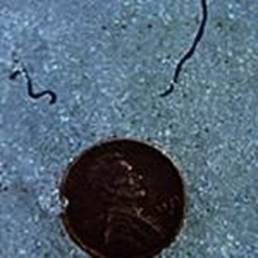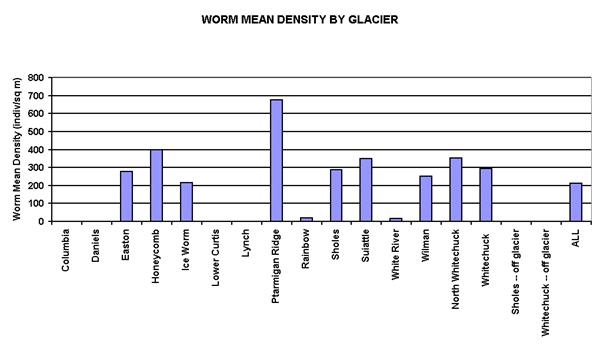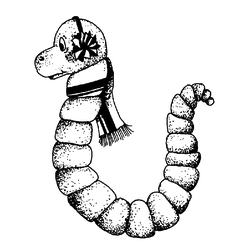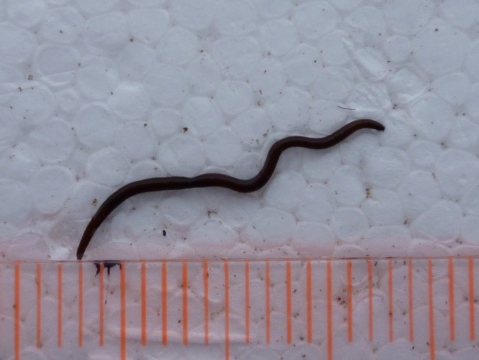It must have gone four inches from its tail-tip to its snout. Cried Deacon White with deep delight: “Say, isn’t that a beaut?” “I think it is,” sniffed Major Brown, “a most disgustin’ brute. Its very sight gives me the pip. I’ll bet my bally hat, You’re only spoofin’ me, old chap. You’ll never swallow that.” “The hell I won’t!” said Deacon White. ” Hey! Bill, that fellows fine. Fix up four ice-worm cocktails, and just put that wop in mine.”—-The Ballard of the Iceworm Cocktail, Robert Service 1940
Iceworms are segmented worms – the annelids, somewhat related to earthworms . They are only found in glacier ice or permanent snowfield in western North America in Oregon, Washington, British Columbia, and Alaska. The southern extent is the Three Sisters range in Oregon. Iceworms are not found in the interior ranges of British Columbia or in the Rocky Mountains and thus seem to be associated with more temperate, maritime climates. It’s interesting that the Three Sisters and Mt. Hood are south of the Cordilleran Ice Sheet limit and thus it was not this ice sheet that distributed the worms. They are pretty resilient and survived the eruption of Mt. Saint Helens and are found in the newly redeveloping glacier on the mountain.

They are able to successfully live in these cold environments and thrive at temperatures around 32 degrees F. They are adapted to these cold temperatures via antifreeze proteins and below the ice surface it never falls below 32 deg F and these creatures will die if heated up to 40 deg F.
They avoid the warm sun by burrowing into the ice during the day and then emerging towards the surface during dusk to feed on algae and pollen collected on the ice surface. They can be spotted in glacier meltwater pools, slush, and streams found in or on top of glaciers, even during the day. It is thought that the water filters the longwave radiation sufficiently for the worms to feed here during the day. Researchers note that while in all other organisms as temperature drops the use of cellular adenosine triphosphate (ATP) drops. But in iceworms as temperatures drop to 21 deg F the cellular levels of ATP rise.

The species name, solifugus, means sun-avoider. T
hey are about 0.25 inches long and 0.03 inches wide. Iceworms are dark brown to black but often look reddish-brown when in water. In the glacier they look like loose pieces of string. These creatures also are referred to as glacier worms and are not the same as other iceworms that live in ice on the ocean floor or deep underground. In studies in Washington on the Suiattle Glacier the mean density of worms was 2,600 iceworms per square meter – so if you were wondering, this means about 7 billion worms for just this glacier. Because of the amount of algae and iceworms in glaciers it is thought that they are important in downstream ecology in terms of biomass and carbon and nutrient cycling. Density of iceworms varies among glaciers in WA, but it is not clear why this is so.

I’ve seen these worms in numerous places over the years while climbing and skiing and always wondered how they manage to survive in such a harsh place. They are pretty easy to come across, just pick your viewing area carefully as they are usually no more than 10 ft. or so from glacial ice.

